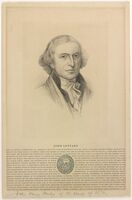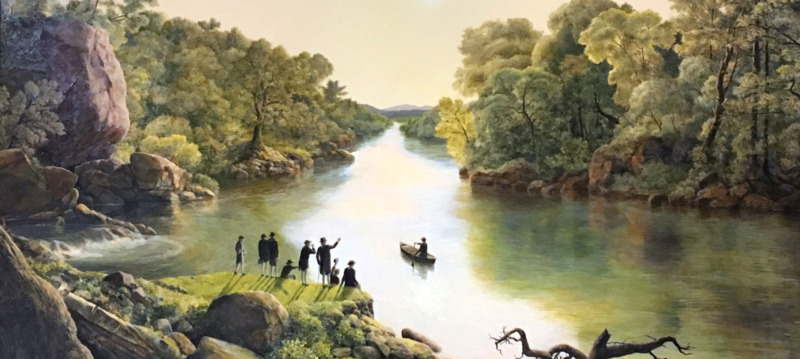John Ledyard: Globalization in the Atlantic World
Ledyard, he who was with Capt. Cook on his last voiage and wrote an account of that voiage, who is gone to Petersburg, from thence he was to go to Kamschatka, to cross over thence to the Northwest coast of America, and to penetrate through the main continent to our side of it. He is a person of ingenuity and information. Unfortunately he has too much imagination. However, if he escapes safely, he will give us new, various, and useful information.”[1]
At his death in 1789, John Ledyard had lived a life full of adventure, from the South Seas to Siberia. His travels had led him to meet people and visit places that few of his contemporaries could claim. John Ledyard and his travels represent the break from Britain and the challenge of establishing the United States as an equal to the European powers. His story intersects with the world of diplomats, commerce and imperial competition in Asia and the Northern Pacific Ocean. Ledyard was neither a diplomat or business man, but he was an astute observer of the world around him with an exceptional ability to network. By self-styling himself as the “American Traveler,” he became part of the conversation as the United States sought its own identity.
Ledyard was the wayward son of a respectable Connecticut family. All of his biographers draw a portrait of a restless young man who resisted boundaries and was easily bored and ready for a new challenge. Sent to Dartmouth College, his antics while there foreshadowed his ventures. He convinced a group of students to climb a mountain on an overnight camping trip, in a New Hampshire winter; later he would climb Mauna Loa in Hawaii with a group he had convinced to accompany him. His departure from Dartmouth is still part of the college’s mythology, as he made a dugout canoe and headed down the Connecticut River to Hartford in it.[2] Combined with a unapproved three month venture into what was then called “Indian Country,” these incidents were later reflected in his attempt to cross Russia and explore Egypt.
After being unable to secure a position to study for the ministry as a result of time at Dartmouth, he convinced a friend of his late father’s to sign him on for a commercial voyage to the Mediterranean. On this trip, biographer Edward Gray asserts he realized he had limited opportunity at home due to a combination of poverty, which would plague him his entire life, and reputation. His second voyage took him to England, where through a variety of misfortunes, he ended up with the choice of transport to a penal colony or the British Army. The British Army shortly thereafter began to prepare to ship to America following the events of Lexington and Concord in April of 1775. Ledyard was able to transfer to the marines and then secure a transfer to Captain James Cook’s third voyage, serving on the HMS Resolution and stepping on to a global stage.
Ledyard returned from that voyage to a new nation, and the subsequent years paralleled some of the challenges it faced. He was attempting to establish himself and earn respect in a time that the United States was struggling to define itself and solidify its place in the world. Ledyard’s tale firmly places him at the intersections of identity and empires in the late 18thcentury. He reflected the burgeoning sense of what an American was or could be. He traveled for and across two of the largest empires of the time and his travails were affected by other imperial concerns.
[1] “From Thomas Jefferson to Charles Thomson, 20 September 1787,” Founders Online, National Archives, https://founders.archives.gov/documents/Jefferson/01-12-02-0152. [Original source: The Papers of Thomas Jefferson, vol. 12, 7 August 1787 – 31 March 1788, ed. Julian P. Boyd. Princeton: Princeton University Press, 1955, pp. 159–161.]
[2] Edward G. Gray, The Making of John Ledyard: Empire and ambition in the Life of an Early American Traveler. New Haven: Yale University Press, 2007 at https://www-jstor org.mutex.gmu.edu/stable/j.ctt1njmv7, pp 34-36.

